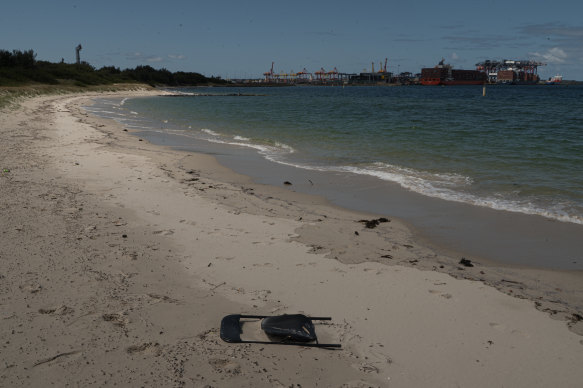Where to find a clean swimming spot after a wet year muddies the state’s waters
Save articles for later
Add articles to your saved list and come back to them any time.
Almost a quarter of the state’s favourite swimming spots have been found to have been polluted by heavy rains over the past year as the nation braces for a long and hot El Nino summer.
Worst hit were estuaries, lakes and lagoons – which collect large amounts of runoff – but even Coogee Beach, Rose Bay Beach and Gymea Bay Baths were found to have seen poor water quality, the annual State of the Beaches report shows.
Foreshore Beach, in Botany Bay, is among the poor quality swimming spots around the state.Credit: Flavio Brancaleone
The report, released by the NSW Department of Planning and Environment, shows that for 2022-23 “poor” or “very poor” water quality increased by 36 per cent than the previous year. Most of these locations were on freshwater, estuarine beaches and lake sites.
The biggest driver of declining water conditions was rainfall – and NSW received more than its fair share last year. During 2022, the state received 55 per cent more rain than its yearly average, making it the second-wettest year on record.
The Northern Rivers region, parts of the Central West, the Riverina and coastal areas around the Illawarra and Sydney had their highest annual rainfall on record, which is reflected in these areas’ poor water quality results.
Five freshwater sites, including the Never Never River on the mid-north coast and Wentworth Falls Lake in western Sydney, were included in the report for the first time, and received the lowest health score.
Professor of civil and environmental engineering Stuart Khan, of the University of NSW, said this shows there’s a greater need to collect this type of data, given the number of people who swim in the area.
Narrabeen Lagoon, Northbridge Baths and Davidson Reserve were among some of Sydney’s swimming spots that received poor health scores.
Director of the Centre for Ecosystem Science, Professor Richard Kingsford, said when there are big rainfall events or floods, more sediment, nutrients and pollution flows into estuaries and lakes.
“It is part of it is a natural process – estuaries have a major run-off disturbance which can have ecological impacts on native vegetation and fish because it changes water chemistry from salty to much more fresh water,” he said. “It’s swings and roundabouts, but it can have good nutrient productivity in the future for estuaries.”
“Increasingly, around the world, urban rivers have a problem with pharmaceutical run off that’s making its way into river systems and affecting the whole life history of some of the animals,” he said.
If the latter was involved, Kingsford suggested that this needed to be addressed or it would continue to impact waterways, making them worse and worse, despite weather patterns.
But the picture for the state’s beaches looks brighter: 96 per cent of monitored beaches have excellent water quality.
Four ocean beaches were upgraded to “very good”, including Fingal Bay and South Stockton Beach in the Hunter Region, and Malua Bay on the South Coast.
Meanwhile, five beaches have been graded as poor, including Malabar Beach, which takes longer to recover from stormwater events than surrounding areas, and Coogee Beach, where work is progressing to improve stormwater diversion.
Khan added that Coogee is usually a good barometer of how ocean beaches are faring because it is often borderline in terms of the number of days with high bacterial counts, allowing it to flip between good and poor.
“Since the main source of bacterial contamination is stormwater, and stormwater has a bigger impact during wet weather, the likelihood of a ‘poor’ rating in any year correlates with the number of rainy days over the last couple of years,” he said.
Khan added it was good advice for swimmers to stay clear of ocean beaches up to one day after rainfall, or if there were signs of stormwater pollution.
“Going into an El Nino period, as we are now, will likely lead to better recreational water quality ratings. This can give the impression that management of the beaches has improved, but that’s largely an illusion, since it is mostly an artefact of changed weather conditions,” he added.
NSW Minister for the Environment Penny Sharpe said it was good to see most of the state’s beaches had excellent water quality ahead of the swimming season.
She urged swimmers to check the Beachwatch website for real-time information about local swimming conditions.
Get to the heart of what’s happening with climate change and the environment. Sign up for our fortnightly Environment newsletter.
Most Viewed in Environment
From our partners
Source: Read Full Article
